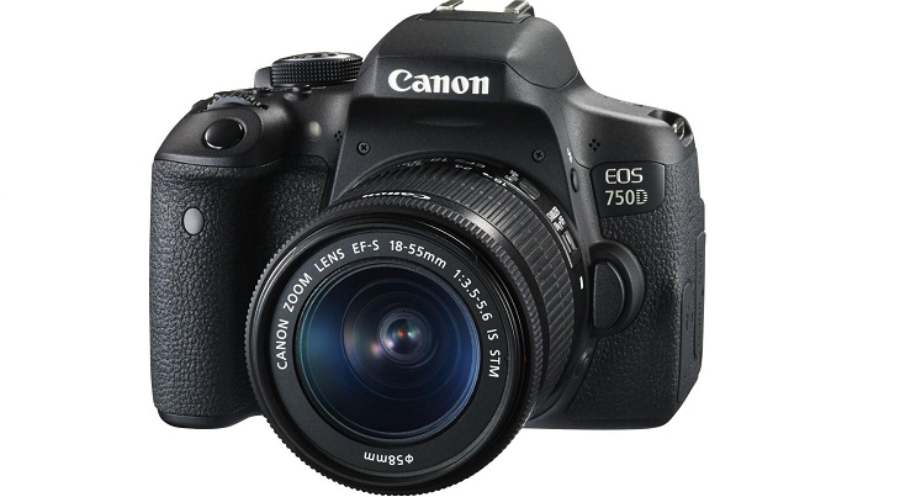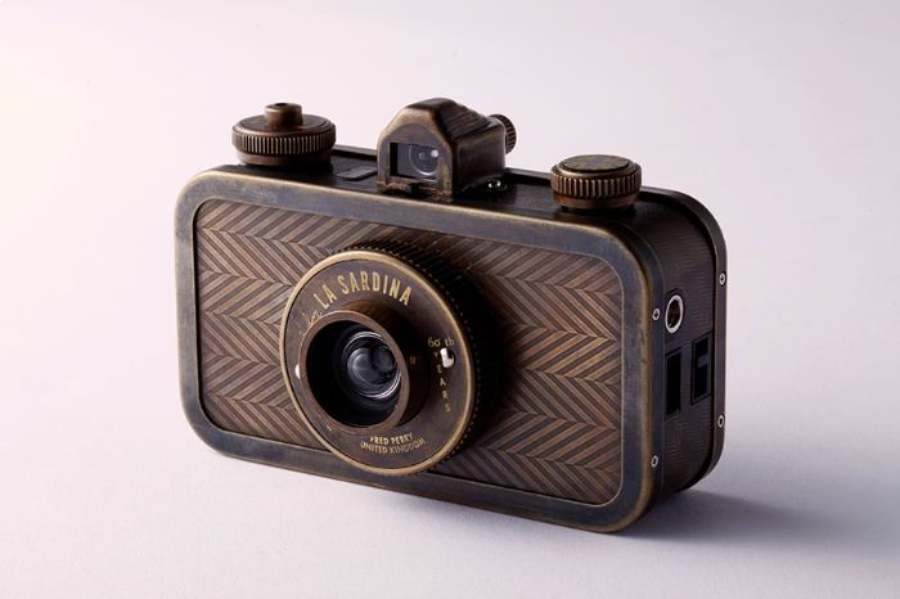Best Selling Products
What is Digital Design? What's the difference between Digital Design and Graphic Design?
Nội dung
This article SaDesign will help you better understand what digital design is, as well as the differences between Digital Design and Graphic Design so you can have a more comprehensive view of the two design fields this major.
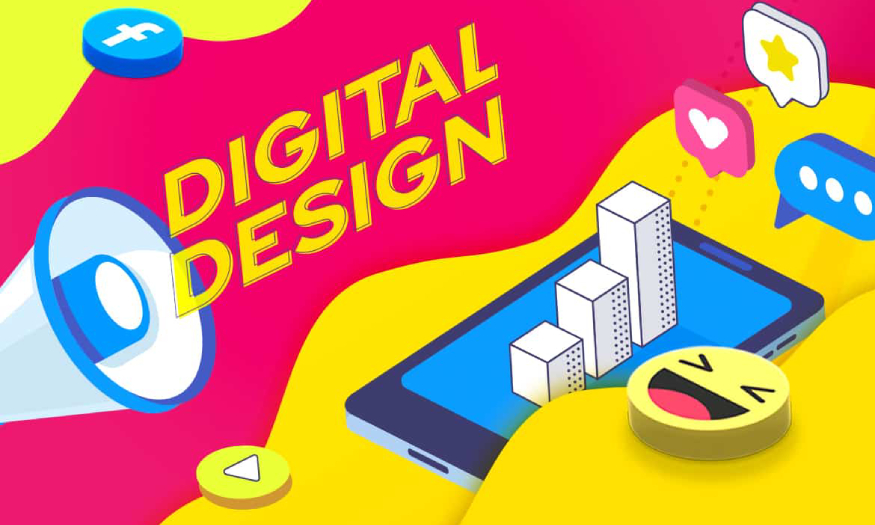
Parallel to the rapid development of technology is the birth and development of digital design - the field of design plays a key role in creating great digital experiences. However, many people are still vague about the concept of Digital Design and often confuse it with graphic design. This article SaDesign will help you better understand what digital design is, as well as the basic differences between Digital Design and Graphic Design so you can have a more comprehensive view of these two design professions.
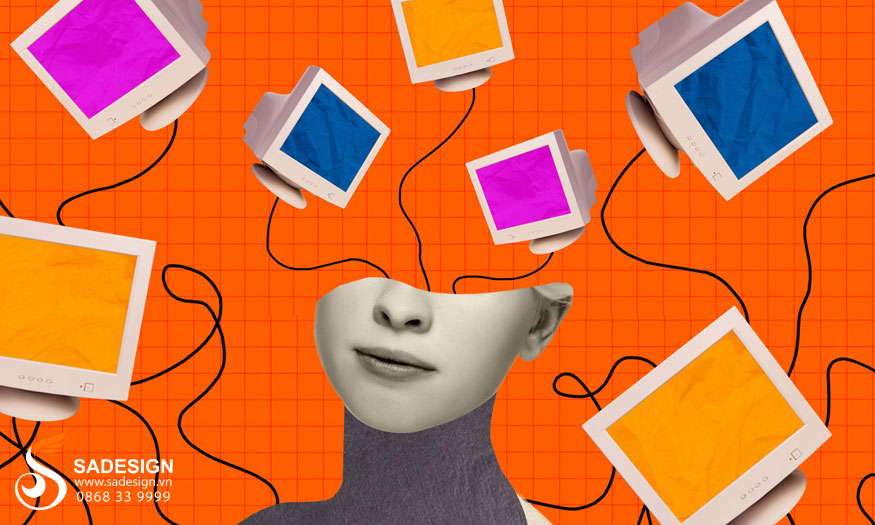
1. What is Digital Design?
Digital design, also known as digital design, is a field of design that focuses on creating digital products and experiences. Simply put, it is the art and science of creating digital products that meet user needs in an online environment.
From initial ideas, the digital design includes the stages of planning, design, development and implementation, creating diverse and rich digital products such as websites, mobile applications and interfaces. user experience (UI), user experience (UX), animation, video, gamification, and many other interactive platforms.
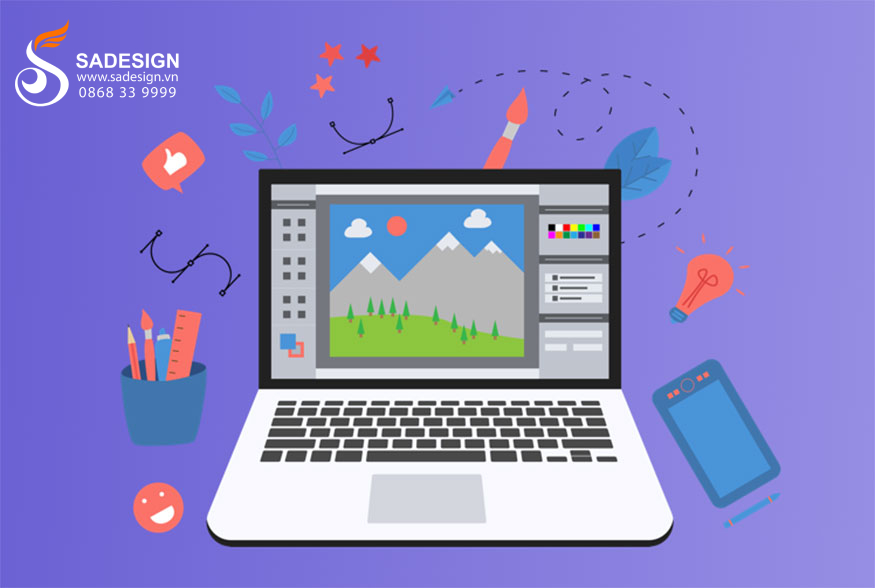
Digital design does not stop at creating beautiful products but also aims to create seamless, intuitive and effective experiences for users. It requires a harmonious combination of creativity, aesthetics, technical skills and understanding of user psychology.
Digital design is not simply about creating beautiful images, it also aims at core goals:
- Create digital products that meet user needs.
- Convey your message and brand clearly and impressively.
- Enhance brand recognition and promote user interaction.
In the digital era, digital design has become an indispensable element in all areas of life. Businesses, organizations and individuals all recognize the importance of investing in digital design to enhance user experience, enhance market competitiveness and promote business development.
2. What Does Digital Design Include?
Digital design is a vast field, encompassing many different disciplines and techniques, with the ultimate goal of creating great digital experiences.
Each specialization within digital design focuses on a specific aspect of the design process, from building the user interface to designing the overall experience, from creating animations to developing video games.
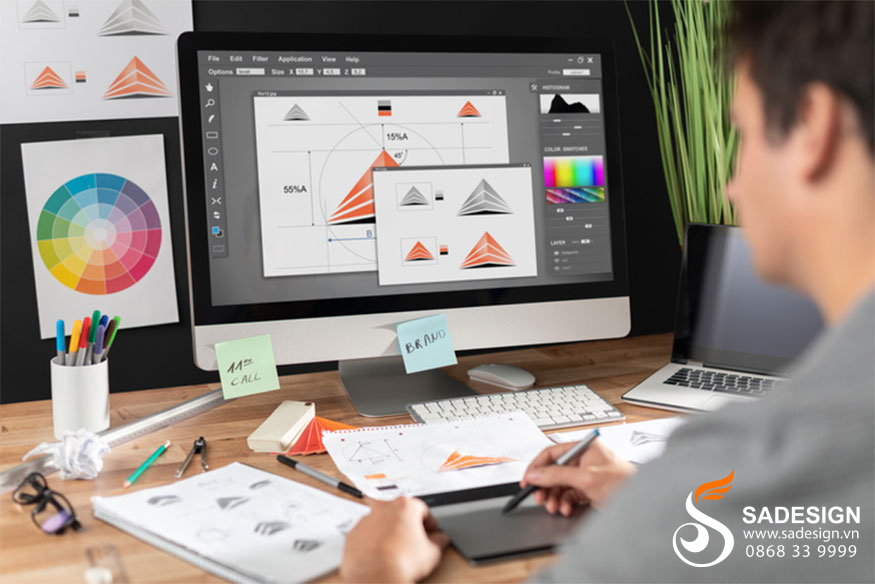
Let's explore the main specialties in this field:
- User Interface (UI) Design or user interface design: Focuses on creating intuitive, friendly and easy-to-use interfaces for digital products. UI designers focus on elements like layout, colors, fonts, images, icons, and interactive controls to create an interface that is beautiful, intuitive, and easy to use.
- User Experience (UX) Design, also known as user experience design: Usually focuses on optimizing the entire user experience when interacting with a digital product. UX designers need to research and understand user behavior, needs, and desires to create seamless, effective, and memorable experiences.
- Web Design or website design: Usually focuses on creating beautiful, friendly and effective websites that meet the goals of the website owner. Web Design includes many aspects, from designing interfaces and layouts to optimizing user experience and integrating interactive features.
3. Distinguish between Digital Design and Graphic Design
Although both digital design and graphic design belong to the field of design, they have fundamental differences in goals, application areas, skills and tools.
The confusion between these two fields is understandable, but a clear distinction between them is essential to properly understand the nature of each profession:
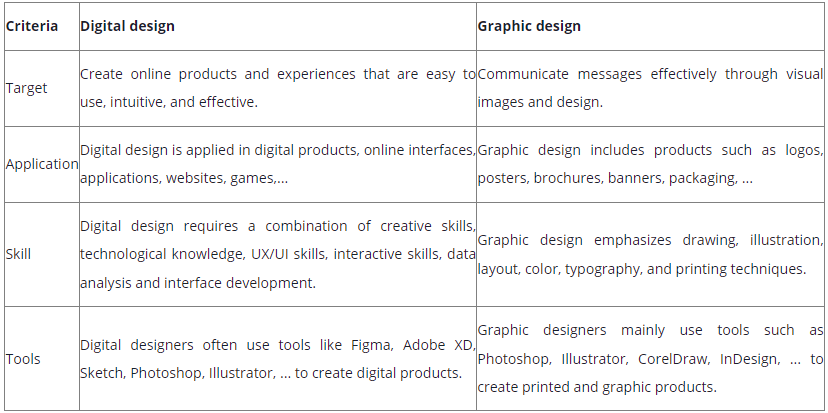
Despite their differences, the lines between digital design and graphic design are becoming increasingly blurred. Many digital designers need to have knowledge of graphic design to design attractive images, logos, and website layouts.
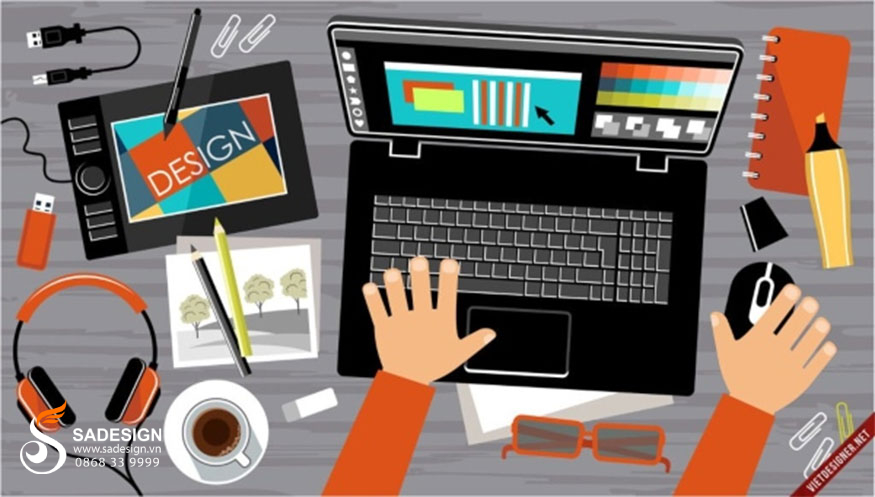
On the contrary, graphic designers also need to update the latest design trends and digital design techniques to create more effective communication publications in the digital environment.
4. Career Opportunities When Studying Digital Design
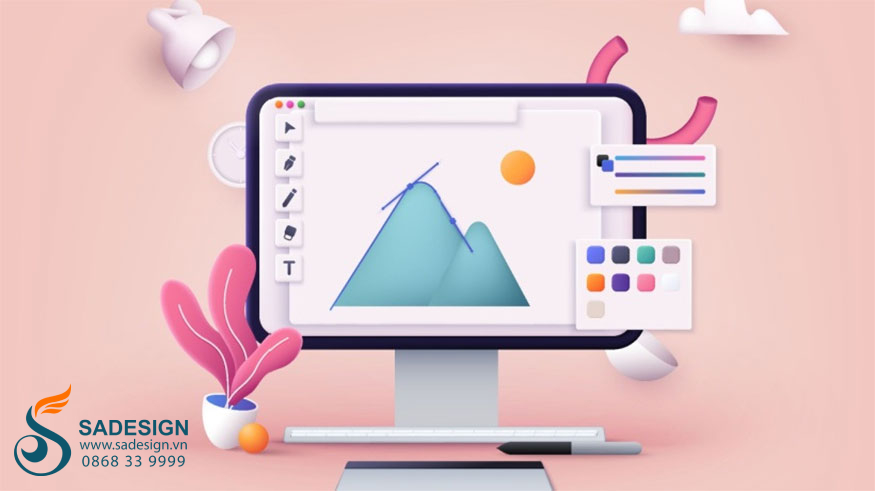
Digital design is a rapidly growing field that promises many exciting and attractive career opportunities for those who are passionate and skilled. The development of digital technology, the rise of online businesses, and the increasing demand for user experience have created a highly potential job market for the digital design industry:
- Digital Design Freelancers: Once you master your skills, you can take on projects as a freelancer. In this role, you must proactively seek clients, set your work schedule, prepare your equipment, and manage contracts—similar to running a business.
- Agency: These are companies that specialize in providing outsourced marketing solutions for businesses. Agencies often hire full-time employees to work in the office or collaborate with a few freelancers for larger projects.
- “In-House” Digital Designers: Simply put, these are professionals who work full-time for a company, responsible for designing products, creating marketing materials, and producing internal publications as requested by management.
5. Tips to Help Digital Design Be More Effective
.jpg)
Creating effective digital design products, not only requires technical skills and knowledge but also requires a deep understanding of users and basic design principles. Here are some tips to help you create more effective and attractive digital designs.
- Understand Your Target Audience: Before diving into the design, take the time to research and thoroughly understand your target audience. Learn about your competitors to gain a clearer picture of the people who will use your product.
- Focus on User Experience: Place the user at the center of the design process. Every decision regarding colors, layouts, fonts, and content should aim to optimize the user experience, making it easy for them to interact with the product and feel satisfied with their experience.
- Use Colors and Fonts Wisely: Colors and fonts have a strong impact on users' emotions, psychology, and behavior. Use colors and fonts skillfully to create harmony, visual appeal, and attraction in your design.
- Ensure User-Friendliness and Usability: Digital design products need to be easy to use and friendly for all users, even those with little experience using technology.
- Stay Updated on Design Trends: The digital design industry is constantly evolving. New design trends continuously emerge alongside advancements in technology and changes in user behavior. Always keep up with the latest design trends to create innovative and appealing digital design products.
6. Steps to start Digital Design
If you are planning to pursue a career in digital design, start your journey to explore and conquer this exciting field with these basic steps:
Step 1: Learn basic design knowledge:
- Basic design principles: Master design principles such as color theory, composition, typography,...
- UX/UI principles: Understand UX/UI design principles to create user-friendly and effective products.
- Technology knowledge: Learn about technologies related to digital design, such as HTML, CSS, Javascript, ...
Step 2: Choose a design major, Digital design includes many different majors. Choose a major that suits your interests, abilities and career goals.
Step 3: Learn to use design software, design software is an indispensable tool in digital design. Take the time to learn how to proficiently use design software such as Figma, Adobe XD, Sketch, Photoshop, Illustrator,...
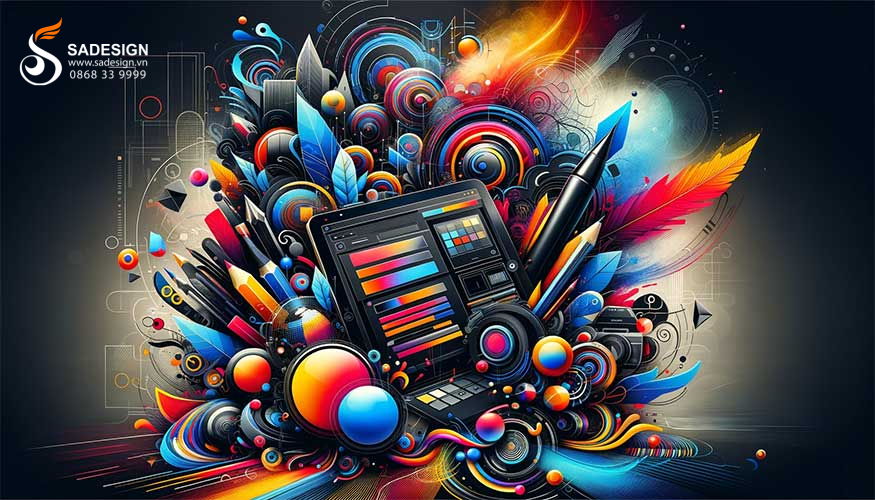
Step 4: Practice and create projects to improve design skills. Start by creating small projects and Gradually increase the complexity of the projects.
Step 5: Join design communities to meet, exchange and learn from others in the field.
Digital design is increasingly asserting its position as an essential field in the digital era. The birth and development of digital design have contributed to creating wonderful digital experiences, improving quality of life and promoting the development of different professions.











































